7 Facts That Will Make You Feel Very Small
7 Facts That Will Make You Feel Very Small
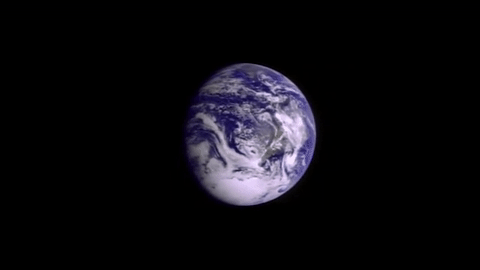
Earth, our home planet, is the fifth largest planet in our solar system and the only planet we know of where life exists. Even though Earth seems extremely large to us, it is actually a tiny spec in the vast expanse of the universe. Here are 7 space facts that will make you feel very small.

1. Our sun is one of at least 100 BILLION stars, just in the Milky Way. Scientists calculate that there are at least 100 billion galaxies in the observable universe, each one brimming with stars. There are more stars than grains of sand on all of Earth’s beaches combined.
In 1995, the first planet beyond our solar system was discovered. Now, thousands of planets orbiting sun-like stars have been discovered, also known as exoplanets.

2. The Milky Way is a huge city of stars, so big that even at the speed of light (which is fast!), it would take 100,000 years to travel across it.

3. Roughly 70% of the universe is made of dark energy. Dark matter makes up about 25%. The rest — everything on Earth, everything ever observed with all of our instruments, all normal matter adds up to less than 5% of the universe.

4. If the sun were as tall as a typical front door, Earth would be the size of a nickel.

5. The sun accounts for almost all of the mass in our solar system. Leaving .2% for all the planets and everything else.

6. Edwin Hubble discovered that the Universe is expanding and that at one point in time (14 billion years ago) the universe was all collected in just one point of space.

7. Four American spacecraft are headed out of our solar system to what scientists call interstellar space. Voyager 1 is the farthest out — more than 11 billion miles from our sun. It was the first manmade object to leave our solar system. Voyager 2, is speeding along at more than 39,000 mph, but will still take more than 296,000 years to pass Sirius, the brightest star in our night sky.
Feeling small yet? Here’s a tool that will show you just how tiny we are compared to everything else out there: http://imagine.gsfc.nasa.gov/features/cosmic/earth.html
Make sure to follow us on Tumblr for your regular dose of space: http://nasa.tumblr.com
More Posts from Intergalacticnerd and Others
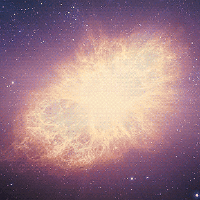







Great Nebula of our Galaxy
A Nebula is an interstellar cloud of dust, hydrogen, helium and other ionized gases located within our cosmos. Long ago Nebula was used as a term for any diffuse astronomical object, including galaxies beyond the Milky Way. As our knowledge of the universe expanded, so did our knowledge of Nebulae.
Credit: NASA/ESA/Image sources
By now you’ve probably heard the news that gravitational waves have been directly observed for the first time ever. Are you excited?

Our friends at PBS Space Time are pretty excited about it too, and they’ve put together an awesome video explaining the physics behind this discovery and why it’s so important.



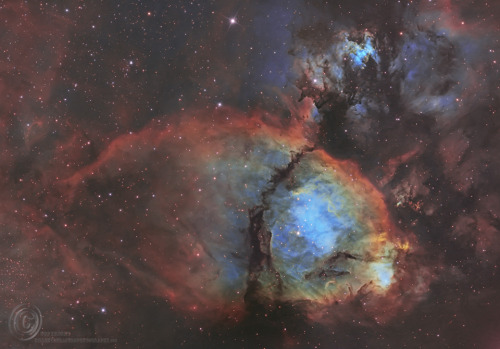
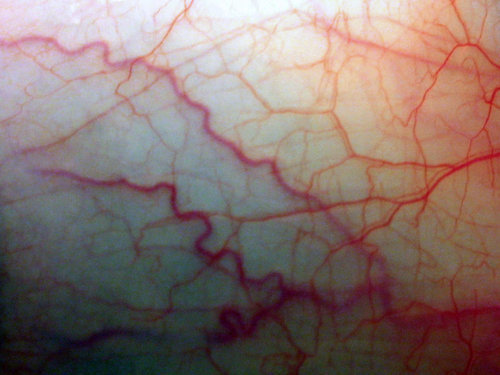
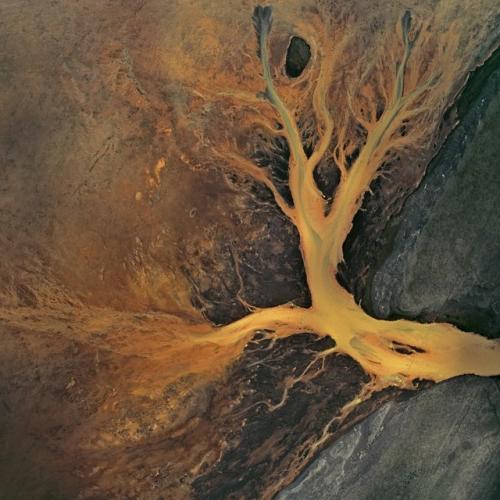

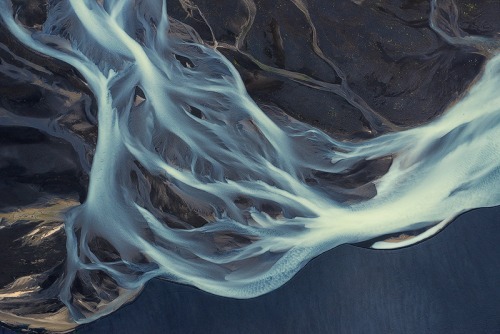


It was just discovered that there is a large ocean of water deep within the surface of Saturn’s icy moon, Enceladus.
Solar System: Things to Know This Week
Here are a few things you should know about our solar system this week:
1. The Bright and the Beautiful

In its lowest-altitude mapping orbit, at a distance of 240 miles (385 kilometers) from Ceres, Dawn has provided scientists with spectacular views of the dwarf planet, especially of its bright, young, hexagonal craters like Haulani.
2. Mars Needs Brains

NASA is soliciting ideas from U.S. industry for designs of a Mars orbiter for potential launch in the 2020s. The satellite would provide advanced communications and imaging, as well as robotic science exploration, in support of NASA’s Journey to Mars. This effort seeks to take advantage of industry capabilities to improve deep space, solar electric propulsion-enabled orbiters.
3. Seeing Double

NASA measured a solar flare from two different spots in space, using three solar observatories. During a December 2013 solar flare, three sun-observing spacecraft captured the most comprehensive observations ever of an electromagnetic phenomenon called a current sheet.
4. Set a Course for Europa

This artist’s rendering shows NASA’s Europa mission spacecraft, which is being developed for a launch in the 2020s. The mission would place a spacecraft in orbit around Jupiter in order to perform a detailed investigation of the giant planet’s moon Europa—a world that shows strong evidence for an ocean of liquid water beneath its icy crust and which could host conditions favorable for life.
5. Go Deep

Jupiter is huge, powerful and spectacular. But what lies hidden inside the giant planet? The Juno mission arrives at Jupiter in July to help us find out. Join Dr. Fran Bagenal to learn more about the mission and how it plans to delve deep into Jupiter’s secrets this year.
Want to learn more? Read our full list of things to know this week about the solar system HERE.
Make sure to follow us on Tumblr for your regular dose of space: http://nasa.tumblr.com

Excitement over tiny tiny ripples.
And so, gravitational wave astronomy is born. We live in exciting times!
What Happened to Mars?
Billions of years ago, Mars was a very different world. Liquid water flowed in long rivers that emptied into lakes and shallow seas. A thick atmosphere blanketed the planet and kept it warm.

Today, Mars is bitter cold. The Red Planet’s thin and wispy atmosphere provides scant cover for the surface below.

Our MAVEN Mission
The Mars Atmosphere and Volatile EvolutioN (MAVEN) mission is part of our Mars Scout program. This spacecraft launched in November 2013, and is exploring the Red Planet’s upper atmosphere, ionosphere and interactions with the sun and solar wind.

The purpose of the MAVEN mission is to determine the state of the upper atmosphere of Mars, the processes that control it and the overall atmospheric loss that is currently occurring. Specifically, MAVEN is exploring the processes through which the top of the Martian atmosphere can be lost to space. Scientists think that this loss could be important in explaining the changes in the climate of Mars that have occurred over the last four billion years.
New Findings
Today, Nov. 5, we will share new details of key science findings from our ongoing exploration of Mars during a news briefing at 2 p.m. EDT. This event will be broadcast live on NASA Television. Have questions? Use #askNASA during the briefing.
Make sure to follow us on Tumblr for your regular dose of space: http://nasa.tumblr.com



Highest point in Georgia

This new NASA/ESA Hubble Space Telescope image shows three of Jupiter’s largest moons parade (seems the perfect word for it) across the giant gas planet. This happens only once or twice every 10 years.
Here’s a more clear view to it:

Cassini Top 10 Images and Science Results of 2015
As our Cassini spacecraft enters its final 20 months before its plunge into Saturn, the mission’s science team has selected their top 10 images from 2015 (above), a year of historic discoveries, as well as the top science results (below). Take a look:
1. First Deep Seafloor Hydrothermal Vents Found Beyond Earth

Cassini found the first evidence of active hot-water chemistry beyond planet Earth. An extensive, four-year analysis of data from the spacecraft, computer simulations and laboratory experiments led researchers to the conclusion the tiny silica (SiCO2) grains most likely form when hot water containing dissolved minerals from the moon’s rocky interior travels upward, coming into contact with cooler water.
2. Global Ocean Beneath Enceladus’ Surface

A global ocean lies beneath the icy crust of Saturn’s geologically active moon Enceladus. Scientists analyzed more than seven years’ worth of images of Enceladus taken by the spacecraft, which has been orbiting Saturn since mid-2004. As a result, they found Enceladus has a tiny, but measurable wobble as it orbits Saturn. This proves that there must be a global layer of liquid separating the surface from the core.
3. Titan Observed Outside of Saturnian Magnetosphere

During Cassini’s flyby of Titan, the giant moon happened to be on the sunward side of Saturn when a powerful outburst of solar activity reached the planet. The strong surge in the solar wind so compressed the sun-facing side of Saturn’s magnetosphere that the bubble’s outer edge was pushed inside the orbit of Titan. This left the moon exposed to, and unprotected from, the raging stream of energetic solar particles. The region of space dominated by Saturn’s magnetic field is called the magnetosphere.
4. Density of a Ring Particles May Indicate Recent Origins

Saturn’s A ring was found to be warmer than expected at the planet’s equinox, and also had an unusually large thermal asymmetry about the equinox. This could be due to the A ring being mostly composed of denser particles made primarily of solid ice, with a thin top layer of fluffy regolith.
5. Titan Southern Polar Ice Cloud

Scientists have detected a monstrous new cloud of frozen compounds in Titan’s low- to mid-stratosphere – a stable atmospheric region above the troposphere, or active weather layer.
6. Curtain Vents on Enceladus?

New research using data from Cassini suggests most of the eruptions from Saturn’s moon Enceladus might actually be diffuse curtains rather than discrete jets. Many features that appear to be individuals jets of material erupting along the length of prominent “tiger stripe” fractures in the moon’s south polar region might be phantoms created by an optical illusion, according to the new study.
7. Discovery of Tethys Red Arcs

Like graffiti sprayed by an unknown artist, unexplained arc-shaped, reddish streaks are visible on the surface of Saturn’s icy moon Tethys. The origin of the features and their reddish color is a mystery to scientists.
8. Saturn’s 30-year Giant Storms Powered by Water Convection

Changes in temperature and the composition of the hydrogen-laden air within the remnants of a giant storm system on Saturn reveal that air was lofted more than 120 miles in altitude from the deeper water condensation levels.
9. Seasonal Change Seen at Saturn’s Poles

Saturn’s polar regions have displayed extreme seasonal changes during Cassini’s decade-long watch, providing the most comprehensive view ever obtained of seasonal change on a giant planet.
10. Huygens Probe Imaging Mosaic of Titan’s Surface and Descent Movie

Ten years ago, an explorer from Earth, the Huygens probe, was released from the Cassini spacecraft and parachuted into the haze of an alien moon toward an uncertain fate. After a gentle descent lasting more than two hours, it landed with a thud on a frigid floodplain on Titan, surrounded by icy cobblestones.
Make sure to follow us on Tumblr for your regular dose of space: http://nasa.tumblr.com
-
 leggerezze reblogged this · 4 weeks ago
leggerezze reblogged this · 4 weeks ago -
 lovingfacewerewolfsblog liked this · 1 year ago
lovingfacewerewolfsblog liked this · 1 year ago -
 plantbitchthings liked this · 1 year ago
plantbitchthings liked this · 1 year ago -
 azadeus liked this · 2 years ago
azadeus liked this · 2 years ago -
 justbecauseitsbeautiful liked this · 3 years ago
justbecauseitsbeautiful liked this · 3 years ago -
 wongfayes reblogged this · 4 years ago
wongfayes reblogged this · 4 years ago -
 wintergreen556 reblogged this · 4 years ago
wintergreen556 reblogged this · 4 years ago -
 k0sm0 liked this · 5 years ago
k0sm0 liked this · 5 years ago -
 angloaddictneedsbbc liked this · 5 years ago
angloaddictneedsbbc liked this · 5 years ago -
 automaticdestinytrash reblogged this · 5 years ago
automaticdestinytrash reblogged this · 5 years ago -
 vinnyry9801 liked this · 5 years ago
vinnyry9801 liked this · 5 years ago -
 driftinhome liked this · 5 years ago
driftinhome liked this · 5 years ago -
 mg20000 reblogged this · 5 years ago
mg20000 reblogged this · 5 years ago -
 bgrateful32 liked this · 5 years ago
bgrateful32 liked this · 5 years ago -
 haldaisilme reblogged this · 6 years ago
haldaisilme reblogged this · 6 years ago -
 luarises liked this · 6 years ago
luarises liked this · 6 years ago -
 bardcoded reblogged this · 6 years ago
bardcoded reblogged this · 6 years ago -
 knightlyvow liked this · 6 years ago
knightlyvow liked this · 6 years ago -
 nicholasbholmes liked this · 6 years ago
nicholasbholmes liked this · 6 years ago -
 kikutrashcan reblogged this · 6 years ago
kikutrashcan reblogged this · 6 years ago -
 myweirdmemories liked this · 6 years ago
myweirdmemories liked this · 6 years ago -
 haldaisilme liked this · 6 years ago
haldaisilme liked this · 6 years ago -
 littlehaize reblogged this · 6 years ago
littlehaize reblogged this · 6 years ago -
 kiyon7904 liked this · 6 years ago
kiyon7904 liked this · 6 years ago -
 nothing-to-seehere liked this · 6 years ago
nothing-to-seehere liked this · 6 years ago -
 ellieg18 liked this · 6 years ago
ellieg18 liked this · 6 years ago -
 a-lone-quark reblogged this · 6 years ago
a-lone-quark reblogged this · 6 years ago -
 a-lone-quark liked this · 6 years ago
a-lone-quark liked this · 6 years ago -
 scarlet-indigo liked this · 6 years ago
scarlet-indigo liked this · 6 years ago -
 willchild reblogged this · 6 years ago
willchild reblogged this · 6 years ago -
 willchild liked this · 6 years ago
willchild liked this · 6 years ago -
 stormhuntingstar reblogged this · 6 years ago
stormhuntingstar reblogged this · 6 years ago -
 stormhuntingstar liked this · 6 years ago
stormhuntingstar liked this · 6 years ago -
 sapphic-bottom liked this · 6 years ago
sapphic-bottom liked this · 6 years ago -
 incorrectmarvelkids liked this · 6 years ago
incorrectmarvelkids liked this · 6 years ago -
 pieceofshitiswhattheycallme reblogged this · 6 years ago
pieceofshitiswhattheycallme reblogged this · 6 years ago -
 pieceofshitiswhattheycallme liked this · 6 years ago
pieceofshitiswhattheycallme liked this · 6 years ago -
 ozwaltwashere liked this · 6 years ago
ozwaltwashere liked this · 6 years ago -
 velomer liked this · 6 years ago
velomer liked this · 6 years ago -
 thetimetostrikeislater reblogged this · 6 years ago
thetimetostrikeislater reblogged this · 6 years ago
"Astronomy compels the soul to look upwards and leads us from this world to another." - Plato
147 posts